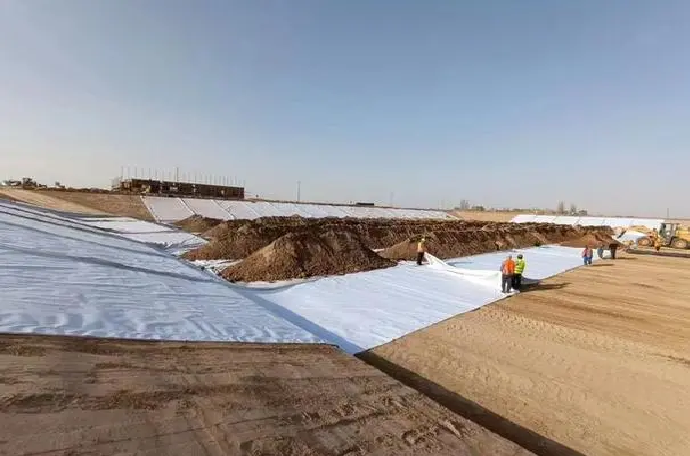+86-159 9860 6917
info@geofantex.com
geofantex@gmail.com
+86-400-8266163-44899
Explore the world of Polypropylene Non-Woven Geotextile in this informative article. Discover what it is, how it compares to other geotextiles, and its water-resistant properties.
What is polypropylene geotextile?
Polypropylene non-woven geotextile is a synthetic fabric made from polypropylene, a durable, lightweight, and flexible thermoplastic polymer. It is produced by bonding fibers together through mechanical, thermal, or chemical processes rather than weaving, creating a non-woven structure.
Key Properties:
- Durability: Resistant to chemical and biological degradation, suitable for long-term use.
- Strength: Provides excellent tensile strength and distributes loads effectively.
- Permeability: Allows water to pass while filtering soil particles, helping control erosion.
- UV Resistance: Treated to withstand sunlight and extend lifespan.
- Versatility: Used in construction, landscaping, environmental protection, and erosion control.
- Cost-Effectiveness: Improves soil performance, reducing the need for expensive fill materials.
This makes polypropylene non-woven geotextile a versatile and reliable material for soil stabilization, drainage, and protective applications.

Is geotextile the same as polypropylene?
Similarities:
Is non-woven polypropylene geotextile water-resistant?
- Material Composition: Non-woven polypropylene geotextile is made from a thermoplastic polymer, with fibers bonded together through mechanical, thermal, or chemical processes, creating a strong and flexible fabric.
- Water Resistance Properties: This material is known for its water-resistant characteristics. It repels water, reducing the risk of moisture penetration while allowing controlled drainage when used in soil stabilization or erosion control.
- Applications: Its water resistance makes it suitable for civil engineering and landscaping projects, including geotextiles for drainage, agricultural fabrics, and protective layers in construction. It is also used in medical and hygiene products where moisture control is critical.
- Performance Factors: The degree of water resistance depends on the density, thickness, and any additional treatments or coatings applied to the fabric. Proper installation ensures optimal performance.
Non-woven polypropylene geotextile is a versatile and reliable material, combining durability, permeability, and water resistance, making it ideal for soil stabilization, erosion control, and drainage applications.
Is non-woven polypropylene water-resistant?



Get Free Sample
We’ll respond as soon as possible(within 12 hours)





















